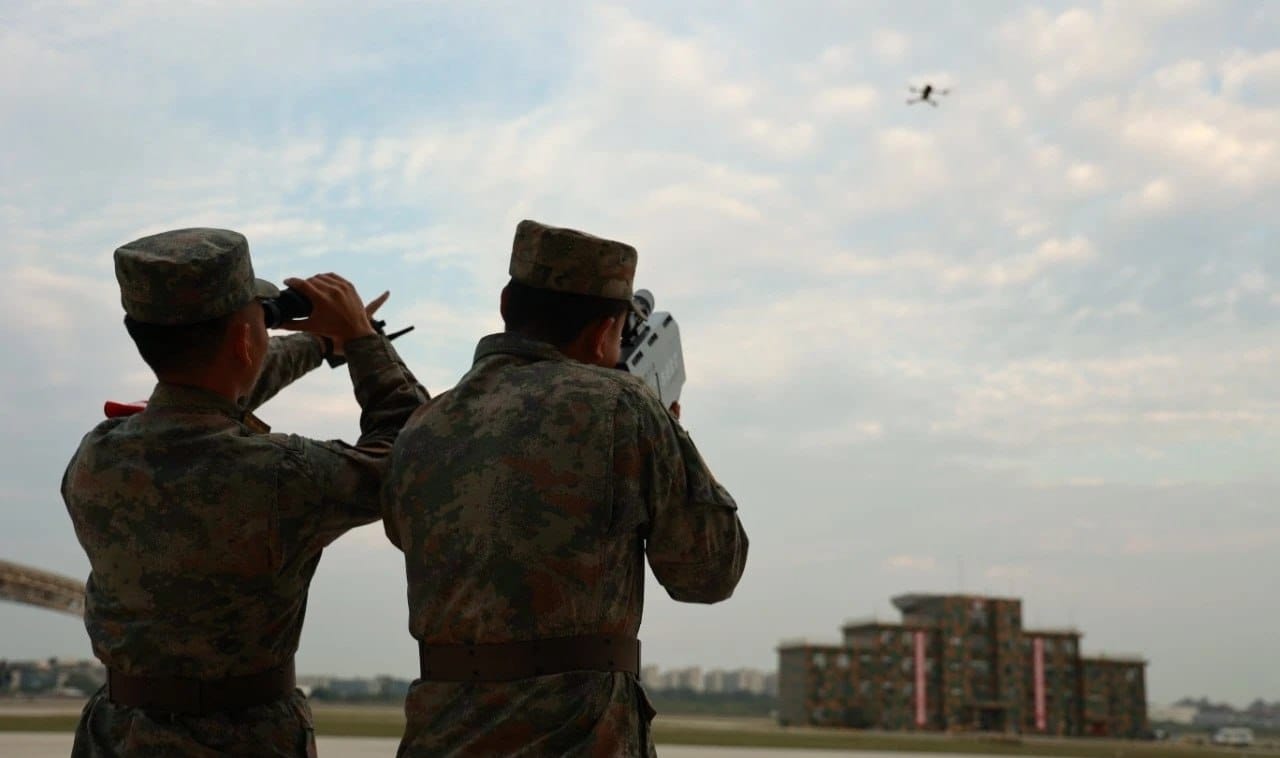China, whose low-cost drones have changed the battlefield, is having difficulty countering drone swarm attacks. A recent assessment of its capabilities revealed that it could achieve a success rate of 40 percent in neutralizing the drone swarm.
State broadcaster CCTV quoted Duan Xiaolong, from an unnamed regiment with the PLA Ground Force’s 77th Group Army, as saying: “Shooting at drone swarms was still quite challenging due to their speed and small size, as well as their ability to change flight trajectories – making it easy for gunners to lose their targets.”
The PLA’s air defense training exercise was held to test China’s defense capabilities against drones and to identify the issues to be addressed in future drills. Military commentators on WeChat, China’s X-like social media, have been speculating that the use of vintage artillery from the 1990s or 2000s could have impacted the outcome. They expect that the use of electronic jamming systems, surface-to-air missiles, and automatic rifles would be able to raise the hit rate.
The Russia-Ukraine war has shown how small drones, including commercial quadcopters, can inflict large damage by carrying out reconnaissance, guided artillery fire, and annihilating tanks.
The major limitation of these drones is that each requires its own operator. In contrast, a swarm that includes hundreds or thousands of drones is controlled as a single unit.
In a swarm, the drones fly together and are aware of their surroundings and how close they are to one another. Like a flock of birds, they use algorithms to avoid bumping into each other.
ALH Dhruv Crash: When Ecuador Grounded All Indian Choppers & Terminated Deal, Shocking HAL
More advanced versions use AI to coordinate the actions for tasks such as spreading out to search an area or carrying out a synchronized attack. The drones are pre-programmed to carry out designated tasks like kinetic attacks, intelligence, surveillance, and reconnaissance.
The premise of swarm drones is that they could break through the strongest existing air defenses. Dozens or hundreds of drones might be shot down, but thousands more would manage to get through with enough munitions to take out air defense radar and other defenses. Attacks by cruise missiles, crewed aircraft, and other traditional weapons would follow this.

Swarm Drones Across The World
The militaries around the world have announced their respective swarm drone programs. The French Icarus project, the Russian Lightning, the Spanish RAPAZ, the UK’s Blue Bear swarm, and the UAE/South African N-Raven, and a drone swarm on show hitting targets at India’s Army Day.
China has been taking the swarm drone technology to another level. It displayed the largest drone swarm ever deployed as 1,180 drones danced and blinked at an aerial show.
It is also looking at taking its drone swarms into near space. The high-altitude micro-UAVs have passive sensors for detecting electromagnetic activity and can map terrain.
The US has the Perdix system drone swarm, in which the micro drone swarm is launched from F/A-18 Super Hornets and autonomously carries out a slew of missions demonstrating collective decision-making, adaptive formation flying, and self-healing.
Talking about these 3D-printed micro drones, William Reaper of the Department of Defense said, “Perdix are not pre-programmed synchronized individuals; they are a collective organism, sharing one distributed brain for decision-making and adapting to each other like swarms in nature. Because every Perdix communicates and collaborates with every other Perdix, the swarm has no leader and can gracefully adapt to drones entering or exiting the team.”
The swarm drones effectively fit in the Defense Advanced Research Projects Agency’s (DARPA) ‘Mosaic Warfare,’ which banks on cost-effective complexity to overwhelm adversaries.
Undersea Drone Swarms
The US Navy is co-opting the defense industry to develop underwater autonomous swarming drones that will offset the Chinese Navy’s numerical advantage in the Indo-Pacific.
The proposition is a scenario in which 200 underwater drones, part of a swarm launched from a warship, lurk in the depths of oceans, biding their time to assess maritime threats and take out an enemy vessel when needed.
Naval observers have been predicting that the swarms of cheap drones underwater could pose the biggest threat to submarines. Swarming drones will be small, lightweight, and cheap. Networked together, they will cooperate like bees from the same hive.
Submarines, large drone motherships, or warships could release hundreds of such expendable drones. Teeming the ocean, these swarming systems can provide long-endurance surveillance capability and move according to operational requirements.
The low-cost platforms sought by the DIU could go into production next year. The aim is to build 10 or more systems per month, which would have an annual production rate of 120 or more such drones. Interceptors will need to operate in cohesive groups and execute complex autonomous behaviors that adapt to the dynamic, evasive movements of the pursued vessel.
These ocean-going vehicles will work to ensure freedom of navigation for the United States, its allies, and partners worldwide.




